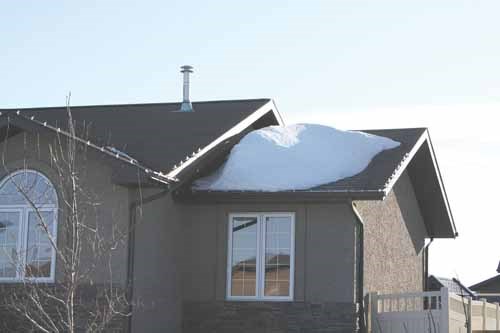It happens every year. The snow starts to melt, the water flows and somebody winds up with a house full of water. It is inevitable.
Or is it?
SGI is trying to get the word out that you do not necessarily have to become a victim.
"The melting we're experiencing during the day, combined with freezing temperatures overnight, are creating ideal conditions for the formation of ice dams," said Andrew Cartmell, president and CEO of SGI. "Snow melt can also lead to other forms of water damage to homes, most commonly to basements," said Cartmell. "Take preventative steps to minimize the risk."
The insurer offers the following tips to prevent ice dams: Keep the amount of snow on your roof to a minimum; keep gutters and downspouts free of snow, ice buildup and icicles; and ensure your attic is properly insulated and ventilated to prevent heat from inside your home from leaking into the attic and causing snow on the roof to melt.
To prevent other types of leakage SGI says to: shovel or remove snow from around your home's foundation and move it where it will melt and drain away from the foundation; ensure your downspouts are extended so they discharge rain or meltwater at least two meters away from the foundation; check to make sure your sump pump is working; if you don't have a sump pump, consider installing one; and consider installing a mainline sewer backwater valve to protect against sewer backup if you don't have one.
While flooding is not inevitable, it is also not possible to completely eradicate. Cartmell warns to make sure you have the proper coverage.
"Ice dam coverage is not automatically included with all home insurance policies, so talk to your insurance broker to ensure you have the right coverage in place to meet your needs," Cartmell said.
Other things to be aware of is that when it comes to water damage, flooding is not covered by insurance and protection against sewer backup is optional.



